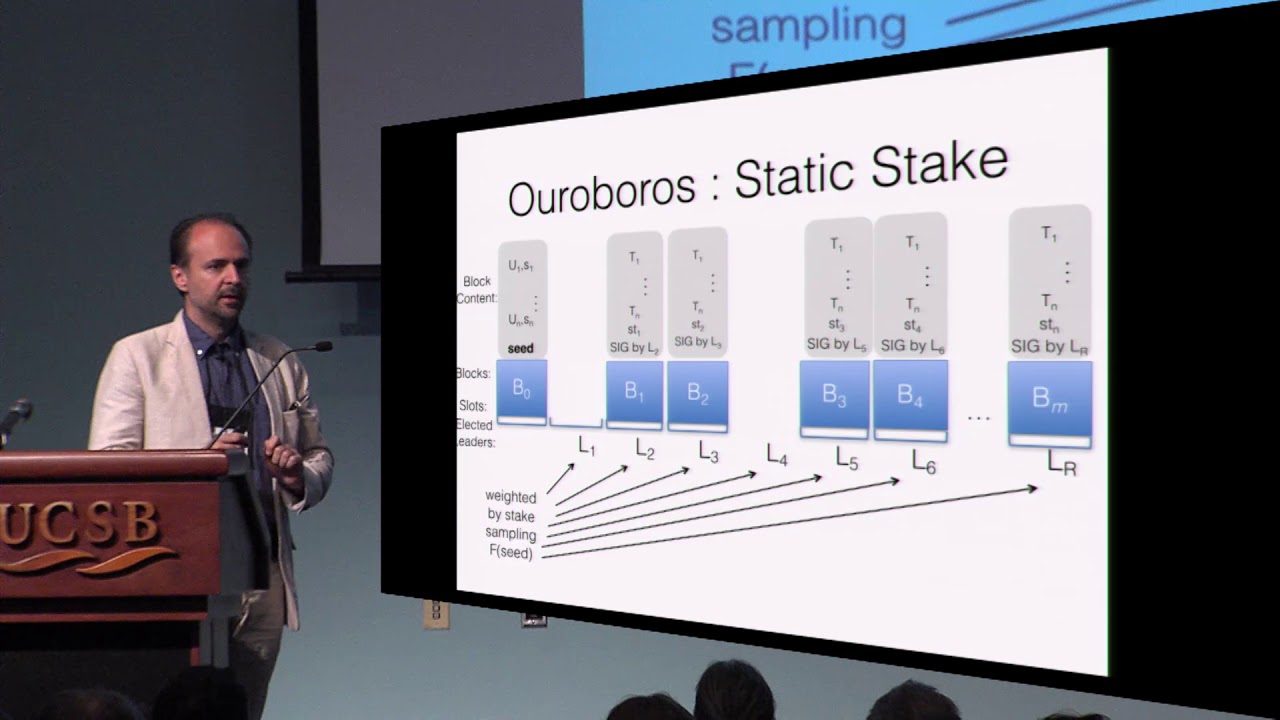Cryptocurrencies have become increasingly popular in recent years. One of the biggest names in the industry is Cardano, a blockchain-based platform that runs on the Ouroboros Proof-of-Stake (PoS) protocol. In this article, we will explore what Cardano’s Ouroboros PoS protocol is and how it works.
Blockchain technology is built on the concept of decentralization, which means that no single entity or group controls the network. Instead, a network of nodes or computers works together to maintain the network. In the case of cryptocurrencies, this network of nodes is responsible for verifying transactions and adding them to the blockchain. To incentivize these nodes to perform this task, they are rewarded with cryptocurrency. Learn more about blockchain technology at https://bitcoins-code.de/.
There are two types of consensus algorithms used in blockchain technology: Proof-of-Work (PoW) and Proof-of-Stake (PoS). PoW was the first consensus algorithm used in cryptocurrencies, but it has some drawbacks, including high energy consumption and centralization.
PoS, on the other hand, is a more energy-efficient and decentralized consensus algorithm. Cardano’s Ouroboros is one of the most advanced PoS protocols in the market.
Click here – Fixed Deposit Interest Rates for Senior Citizens: Benefits and Limitations
What is Cardano’s Ouroboros PoS Protocol?
Ouroboros is the PoS protocol that Cardano uses to achieve consensus on its blockchain. The protocol was developed by researchers at the University of Edinburgh, and it has been peer-reviewed and verified by academic experts.
The Ouroboros PoS protocol uses a different approach than traditional PoS protocols. Instead of selecting validators randomly, it uses a leader election algorithm that selects a set of slot leaders for each epoch. These slot leaders are responsible for creating new blocks and validating transactions.
The protocol is divided into several phases, each with its own set of rules and requirements. In the first phase, called the Genesis phase, a set of initial validators is selected to bootstrap the network. In the subsequent phases, new validators are selected based on their stake in the network.
How Does Ouroboros PoS Protocol Work?
The Ouroboros PoS protocol is divided into five distinct phases, each with its own set of rules and requirements.
Genesis Phase
The Genesis phase is the first phase of the protocol. During this phase, a set of initial validators is selected to bootstrap the network. These validators are selected based on their reputation, which is calculated based on their stake in the network and their previous performance.
Epoch Establishment
The Epoch Establishment phase is responsible for selecting slot leaders for each epoch. An epoch is a period during which a set of slot leaders is responsible for creating new blocks and validating transactions.
Slot Leadership
The Slot Leadership phase is responsible for selecting a slot leader for each slot. A slot is a fixed period during which a block can be created.
Block Creation
The Block Creation phase is responsible for creating new blocks. Slot leaders are responsible for creating new blocks during their assigned slots.
Transaction Validation
The Transaction Validation phase is responsible for validating transactions. Validators are incentivized to validate transactions accurately by being rewarded with cryptocurrency.
Click here – Understanding XRP: A Comprehensive Guide to Ripple’s Cryptocurrency
Benefits of Ouroboros PoS Protocol
The Ouroboros PoS protocol has several benefits over traditional PoS protocols. It is more energy-efficient, which means that it consumes less energy and is more environmentally friendly. It is also more secure, as it is designed to prevent certain types of attacks, such as a 51% attack. Additionally, the protocol is more decentralized, as it allows anyone to participate in the network by holding Cardano’s cryptocurrency, ADA.
Conclusion
Cardano’s Ouroboros PoS protocol is one of the most advanced and secure PoS protocols in the market. It is designed to be energy-efficient, decentralized, and more secure than traditional PoS protocols.
The protocol uses a unique approach to selecting validators, which ensures that the network is run by reliable and trustworthy validators. This approach also prevents certain types of attacks, making the network more secure.
Overall, Cardano’s Ouroboros PoS protocol is a significant step forward in the development of blockchain technology. It addresses many of the issues that plague traditional PoS protocols and offers a more efficient and secure alternative.
If you’re interested in learning more about Cardano and its Ouroboros PoS protocol, there are many resources available online. Whether you’re a cryptocurrency enthusiast or a developer looking to build on the Cardano platform, there’s something for everyone.
FAQs
What is Cardano’s Ouroboros PoS protocol?
Cardano’s Ouroboros PoS protocol is a consensus algorithm used to achieve consensus on its blockchain. It is more energy-efficient, decentralized, and secure than traditional PoS protocols.
How does Ouroboros PoS protocol work?
The Ouroboros PoS protocol is divided into five phases, each with its own set of rules and requirements. These phases ensure that the network is run by reliable and trustworthy validators and prevent certain types of attacks.
What are the benefits of the Ouroboros PoS protocol?
The Ouroboros PoS protocol is more energy-efficient, secure, and decentralized than traditional PoS protocols. It also allows anyone to participate in the network by holding Cardano’s cryptocurrency, ADA.
How can I learn more about Cardano and Ouroboros PoS protocol?
There are many resources available online, including Cardano’s official website and community forums. You can also find information on social media platforms like Twitter and Reddit.
Can I build on the Cardano platform?
Yes, Cardano is a blockchain-based platform that allows developers to build decentralized applications (dApps) on top of their blockchain. If you’re interested in building on Cardano, you can check out its developer resources online.

